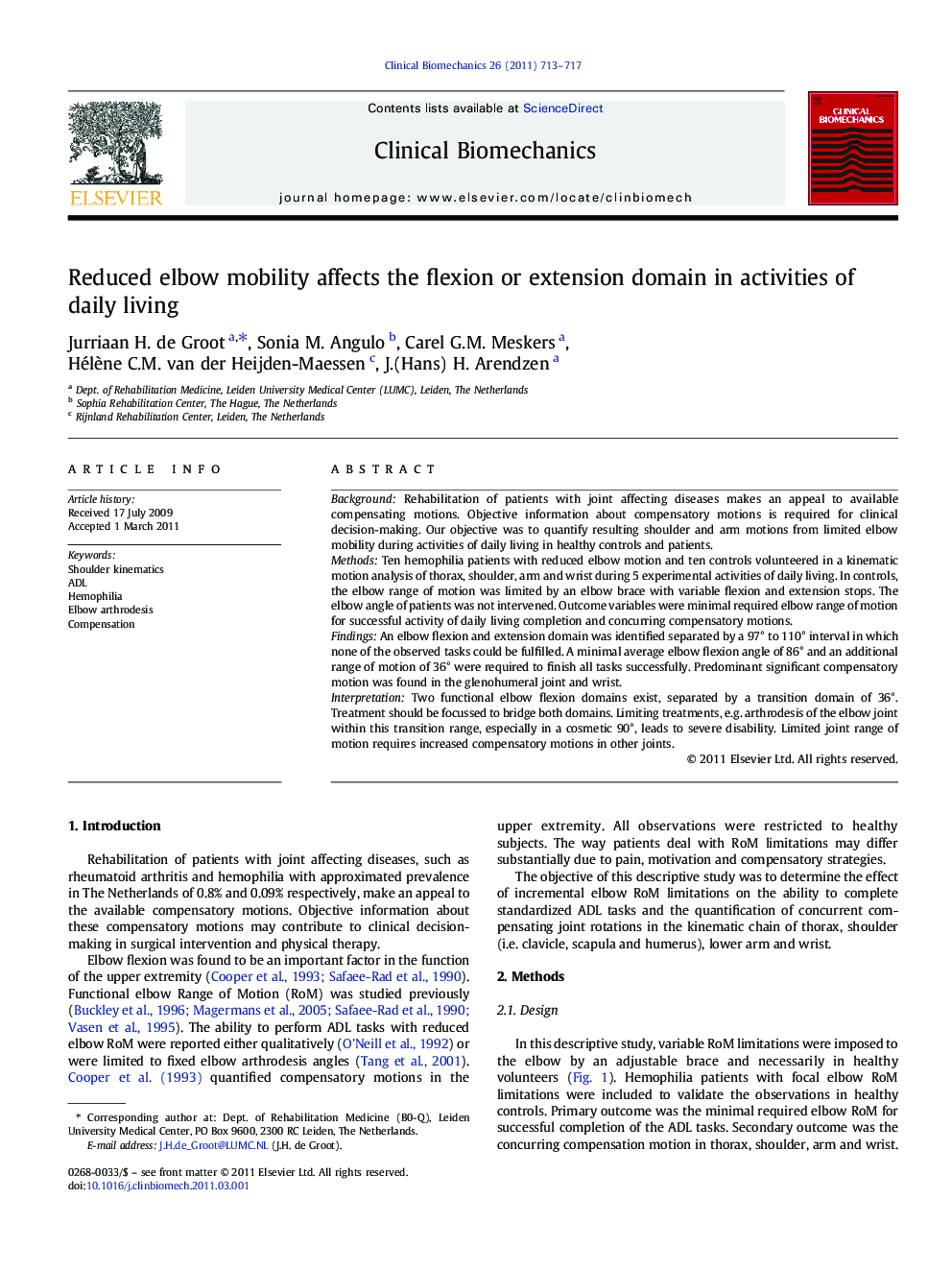| Article ID | Journal | Published Year | Pages | File Type |
|---|---|---|---|---|
| 4050717 | Clinical Biomechanics | 2011 | 5 Pages |
BackgroundRehabilitation of patients with joint affecting diseases makes an appeal to available compensating motions. Objective information about compensatory motions is required for clinical decision-making. Our objective was to quantify resulting shoulder and arm motions from limited elbow mobility during activities of daily living in healthy controls and patients.MethodsTen hemophilia patients with reduced elbow motion and ten controls volunteered in a kinematic motion analysis of thorax, shoulder, arm and wrist during 5 experimental activities of daily living. In controls, the elbow range of motion was limited by an elbow brace with variable flexion and extension stops. The elbow angle of patients was not intervened. Outcome variables were minimal required elbow range of motion for successful activity of daily living completion and concurring compensatory motions.FindingsAn elbow flexion and extension domain was identified separated by a 97° to 110° interval in which none of the observed tasks could be fulfilled. A minimal average elbow flexion angle of 86° and an additional range of motion of 36° were required to finish all tasks successfully. Predominant significant compensatory motion was found in the glenohumeral joint and wrist.InterpretationTwo functional elbow flexion domains exist, separated by a transition domain of 36°. Treatment should be focussed to bridge both domains. Limiting treatments, e.g. arthrodesis of the elbow joint within this transition range, especially in a cosmetic 90°, leads to severe disability. Limited joint range of motion requires increased compensatory motions in other joints.
